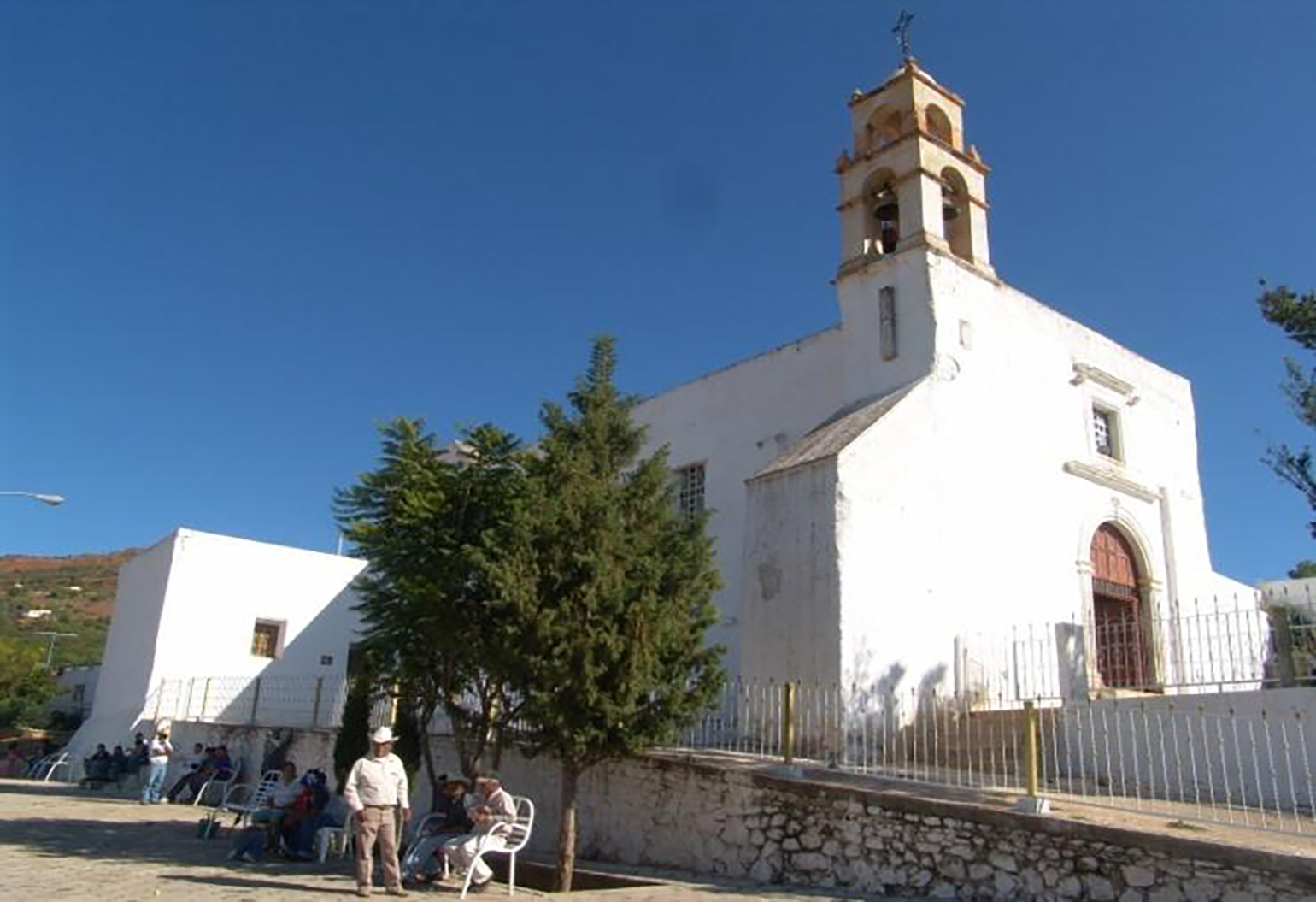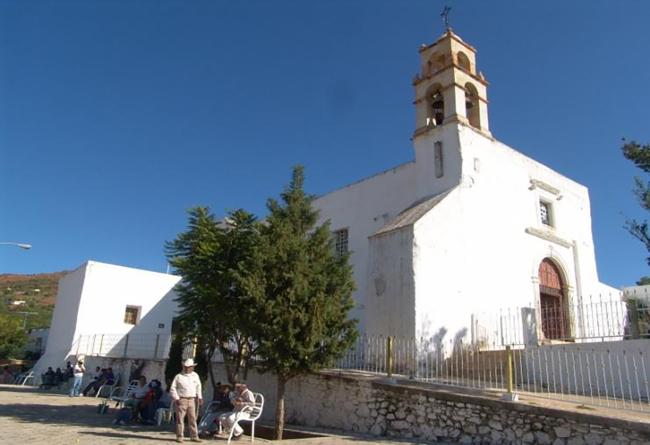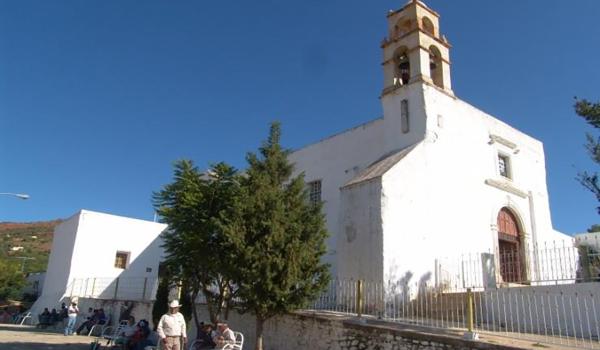Templo del pueblo de San José de Avino
Route element
Templo del pueblo de San José de Avino
One of the first mining towns established north of Zacatecas was the town of San José de Avino, discovered by Captain Francisco de Ibarra in 1554. However, its exploitation began several years later, around 1630. Despite this, it was abandoned for long periods and was re-exploited around 1730 by the Basque José de Echaez. It was during this time that the name "Real de San José del Avinito" was formally adopted.
The church of San José, located in the town of San José de Avino, was built by Esteban de Erauzo in 1759. It is characterized by its sober façade, which features a single-story tower with four stone arches, a half-dome, and four stone battlements. In front of the chapel was a small atrium or cemetery, adorned with a carved stone cross.
The interior of the church consists of a single nave covered with fifty-three grooved beams. The building includes two altarpieces: the main one has two sections and a cornice, with an image of San José, the patron saint of the place, located in the center, and above it, a small Cristo de Esquipulas, associated with travelers on the Royal Inland Road.
The side altarpiece is dedicated to Cristo de Zacatecas, the patron saint of miners. On some of the other walls, you can admire works by the New Spanish painters Antonio de Torres and Pedro López Calderón.





